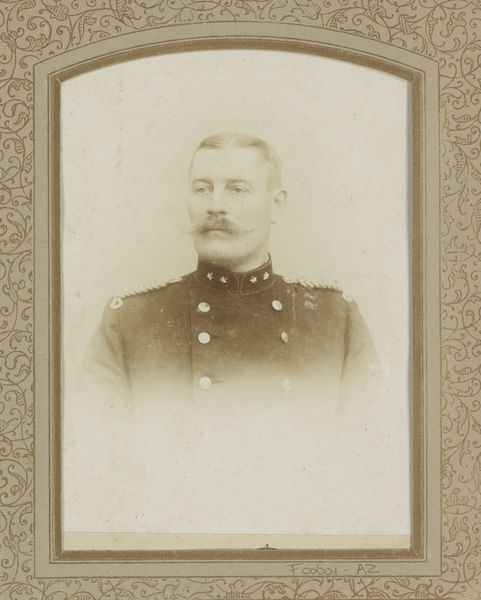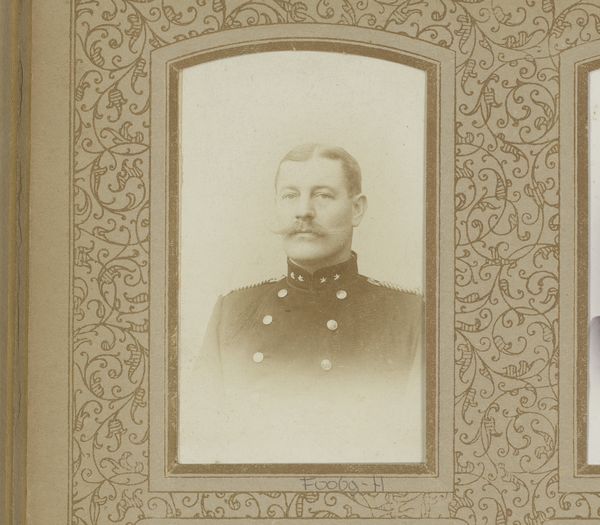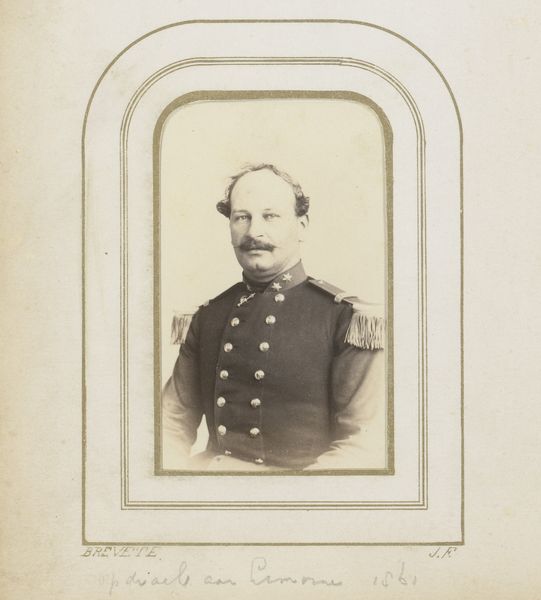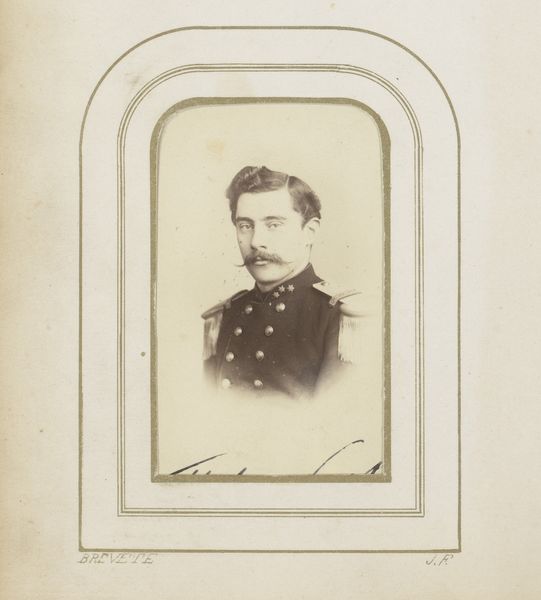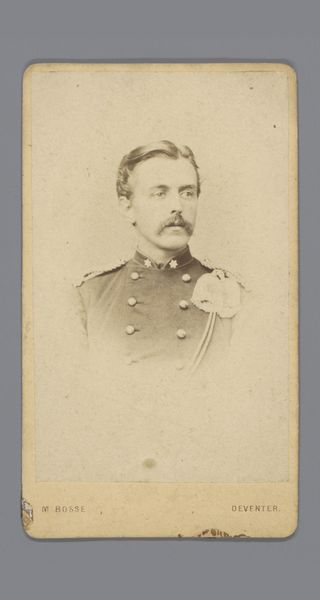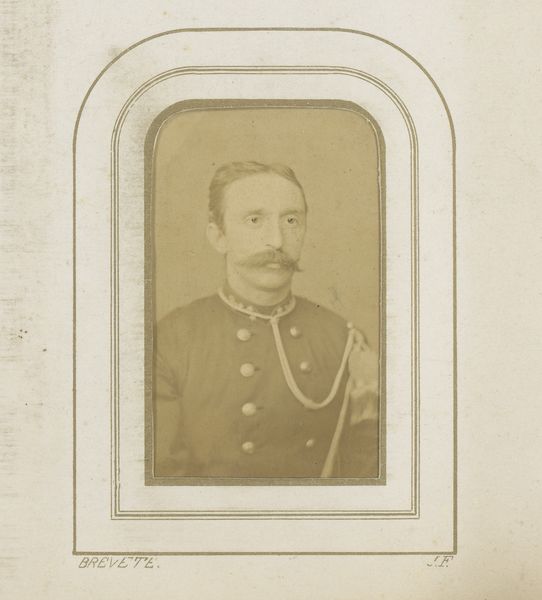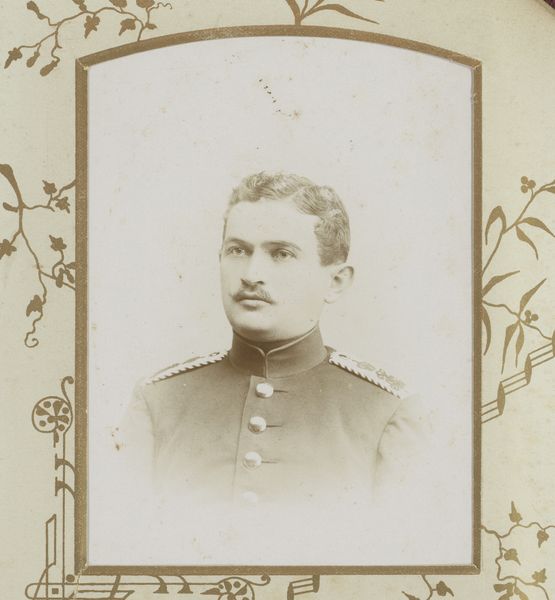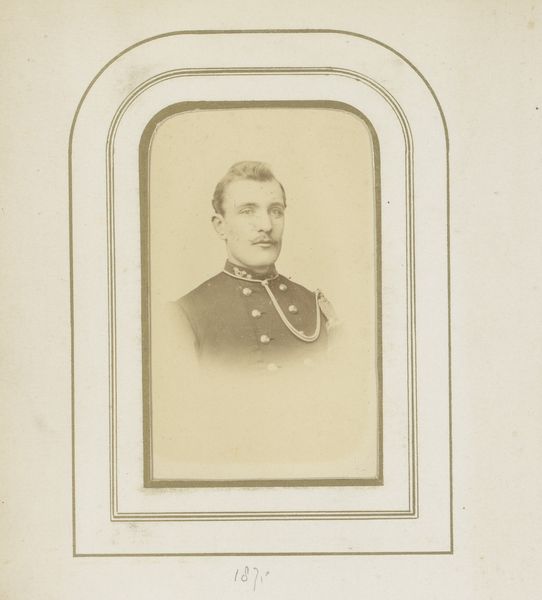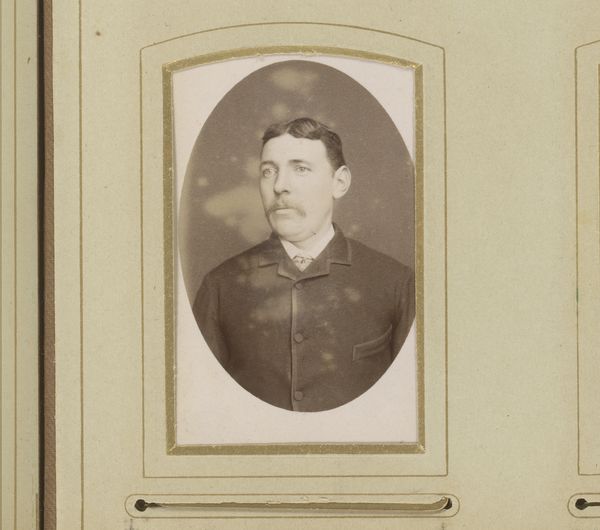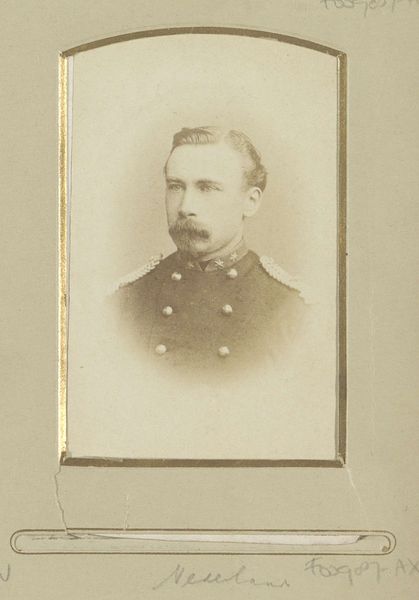
print, photography
#
portrait
# print
#
photography
#
genre-painting
#
post-impressionism
Dimensions: height 137 mm, width 97 mm
Copyright: Rijks Museum: Open Domain
Curator: Standing before us is “Portrait of a Man in Military Uniform,” a photographic print by Jacobus Johannes de Haan, likely created between 1896 and 1901. Editor: It's austere, isn’t it? The monochrome tones and formal pose give it a certain gravity. Curator: Indeed. It’s interesting to consider the socio-political context of military portraiture during that period. Such images served not only as personal mementos but also as powerful symbols of state authority. Think of the impact these portraits had in projecting a sense of order and strength. Editor: Yes, and the photographic process itself! Let's not forget the material reality—the specific chemicals and techniques used to fix the image onto paper. It would have been an albumen or gelatin silver print perhaps, meticulously produced and reprinted. Consider the labor involved, and the accessibility it offered as opposed to painted portraits. Curator: Good point. And the framing! The way the photographic image is presented within an ornamental border. This echoes a desire to ennoble, almost canonize, its subject, fitting into societal conventions regarding presentation and hierarchy. Editor: Exactly. That frame speaks volumes. But look at the subject's uniform! The quality of the fabric, the details of the braiding… It’s all designed for impact, for establishing a visual presence connected to power. The way it’s pressed and how light catches on its surface is meant to reinforce control. Curator: Absolutely. This ties directly into questions of who gets to be represented and how. Who had the resources to commission a portrait like this? Whose image was deemed important enough to preserve? It highlights photography's function as an evolving medium to immortalize or propagate status. Editor: So, beyond the mere image of a man, this becomes an investigation of the labor, capital, and social structure necessary to produce and circulate this photographic object. Curator: Precisely. This portrait then acts as a record, documenting both an individual and the forces that shaped the imagery of his time. Editor: Fascinating. It transforms what appears as a standard image into something far more rich and historically revealing, then. Curator: Indeed, an investigation into both art and history in action.
Comments
No comments
Be the first to comment and join the conversation on the ultimate creative platform.
